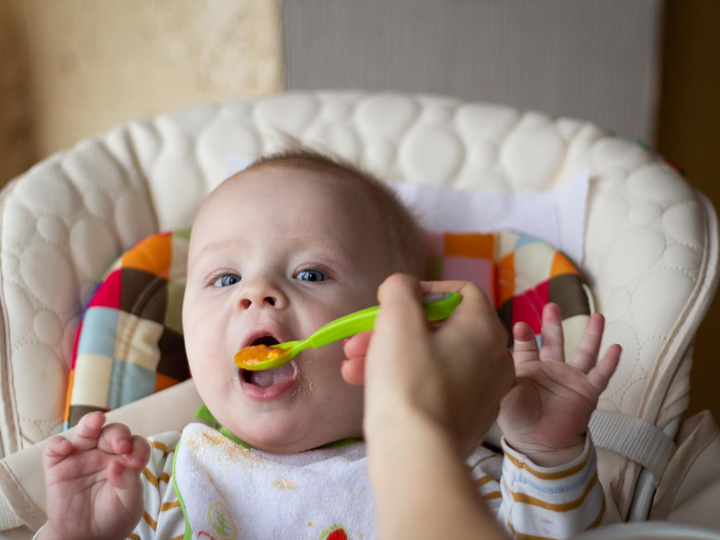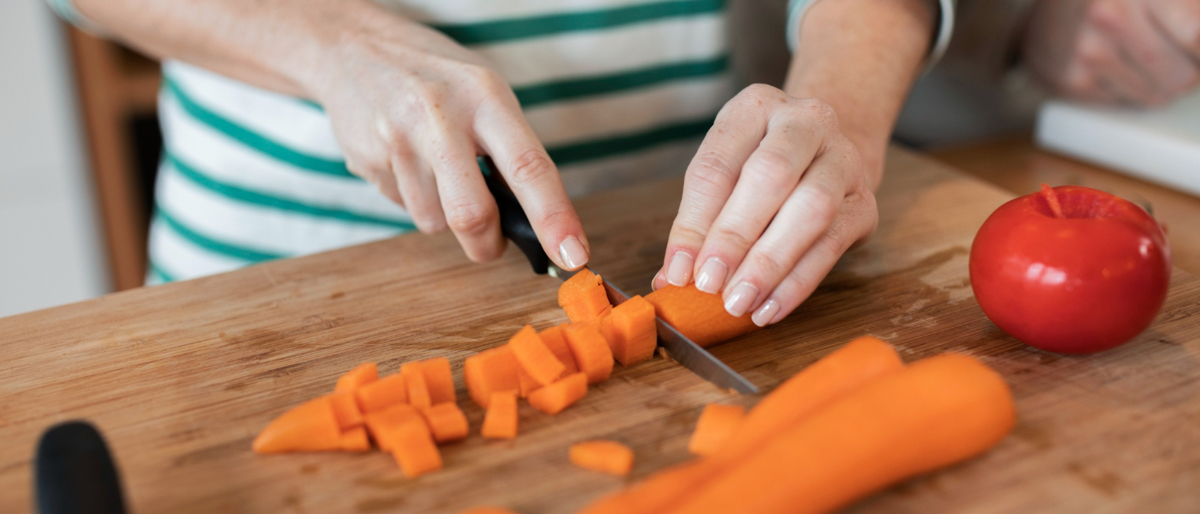Understanding baby food pouches
- 0-1 Years
- Feeding and eating
- Staying safe and accident prevention

Baby food pouches can offer a quick and easy solution for busy families. But they can be expensive and there are concerns that they lack important nutrients. Watch the videos on this page where 2 paediatric dietitians, talk about the concerns of relying too heavily on pouches.
Understanding what's in a baby food pouch
Baby food pouches are soft, squeezable packs that are filled with blended food. They usually have a small spout to squeeze the food out from. Baby food pouches can be useful when you don't have much time, or if you are out with your baby.
There are lots of different flavours and options such as:
- meat
- vegetable
- yoghurt
- fruit
Each baby food pouch will have an age range they are best for. For example, some are for babies from 6 months and some from 9 months.
Issues with texture and consistency when using baby food pouches
The texture between different baby food pouches can change quickly from smooth to lumpy consistencies. These big changes can be hard for some babies, and it may make weaning more difficult.
When you cook at home you can slowly change the texture and consistency of the food. You can go at a pace your baby is comfortable with. This will help them get used to new textures and foods.
The benefits of home cooking and bulk cooking

Home cooking helps you to create a specific texture with the food you feed your baby. This means you can slowly transition from smooth foods to chunky and lumpy foods.
Home cooking can be easy and simple. If you are making a home cooked meal for your family, you can choose some of these foods to blend or mash for your baby. You don't need to cook anything separate. For example, if you are cooking vegetables as part of your meal, you can separate a portion of these vegetables to blend.
You can pour your blended vegetables into ice cube trays and freeze them for later. When freezing food, try bulk cooking to help save time in the future.
The cost of baby food pouches
Although pouches may be convenient, they are often expensive. Home cooking can be a healthier and cheaper way to feed your baby.
Concerns with spouts on baby food pouches
Often baby food pouches have a spout which you can squeeze the food out of. This may be more convenient and less messy. But try to avoid allowing your baby to directly feed from the spout.
Help your baby to feed themselves from a bowl, or feed them from a spoon. It's important to encourage your baby to be messy. Try not to wipe away food from their mouth and hands whilst they are eating. It's just as important for your baby to explore the food with their hands, look at it, and get it round their mouth. Read more about messy play.

Nutritional health concerns
There are some concerns that baby food pouches lack important nutrients and vitamins, like vitamin C and iron.
Some fruit pouches lose a lot of their vitamin C content during the manufacturing process. Cooking homemade food helps you to be more in control of the nutrients and vitamins in the food. For example, boiling carrots in a small amount of water at home helps to avoid vitamin c being lost.
When fruit is blended it can create something called "free sugars". Some baby food pouches contain high amounts of sugar because of how they are made. Some savoury pouches also contain sugar.
Children aged 1 should have no more than 10g of free sugars a day. Babies under 1 year old do not have a set limit, but you should not add sugars to their food or drink. Try to keep the amount of sugary food and drinks as low as possible.
Key points about feeding your baby
Cooking food at home for your baby gives you control over the texture. You will also be able to choose the ingredients, so you don't have to add sugar into savoury dishes. Boiling foods in a small amount of water can also help avoid losing important vitamins.
It's ok to use baby food pouches occasionally, but it is best not to give your baby a pouch every day.
Last reviewed: 3 June, 2025
